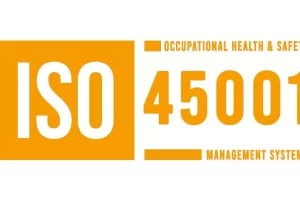Introduction to ISO 45001:
In this rapidly developing, overly active, and busy world where most people spend a larger portion of their time at work, it is important that organizations pay close attention to occupational health and safety management. The ISO 45001 Standard provides the requirements, procedures, and principles that organizations should adopt while implementing occupational health and safety management systems aimed at maintaining and improving health and safety at work.
Brief History of ISO 45001:
The British Standard OHSAS 18001:2007 (Occupational Health and Safety Assessment Series) was replaced by the ISO 45001:2018 OHSMS (Occupational Health and Safety Management System) in March 2018. Although adopted in several countries, the OHSAS 18001 did not gain worldwide recognition.
In order to achieve an effective occupational health and safety management system, the ISO 45001 was proposed and developed in October 2013. An estimate of 70 countries worked on the draft. Up until 2017, the ISO 45001 Standard did not gain much ground nor make a satisfactory headway. However, in 2018, a revised draft was approved and published by the ISO.
Unlike the OHSAS, the ISO 45001 Standard does not just eliminate work-related threats, but eliminates future hazards and creates opportunities to improve overall health and safety at work. It simply provides the framework for an effective OHSMS as desired. In this article, we will discuss the ISO 45001:2018 Occupational Health and Safety Management System Principles to help you understand the purpose of the ISO 45001 OHSMS and how they can impact your work/career.
ISO 45001:2018 Occupational Health and Safety Management System Principles:
The ISO 45001 Standard is based on the Plan-Do-Check-Act (PDCA) cycle which provides a layout for an organization to assess its OHSMS performance. Based on the ISO 45001:2018 Occupational Health and Safety Management System Principles, the Plan-Do-Check-Act concept is used by organizations to plan and implement what is required to eliminate OHSMS risks and damages thereby ensuring continual improvement.

-
- Plan: review and assess OH&S risks and opportunities, establish OH&S aims and objectives and means of achieving set result
- Do: follow through by implementing the processes planned, and ensure everyone understands their roles and responsibilities in implementing the processes
- Check: monitor and measure activities, and review the effectiveness of the processes established in achieving the set objectives
- Act: report findings and take actions that would instigate continuous improvement aimed at achieving intended results
Goals of Occupational Health and Safety Management System:
-
- Identify occupational health and safety hazards,
- Minimize OHSMS associated risks and/or totally eliminate them,
- State clear goals for occupational health and safety performance,
- Define ISO 45001:2018 occupational health and safety management system principles,
- Establish procedures for an effective occupational health and safety management system,
- Review and reporting OHSMS performance results for continuous improvement
ISO 45001:2018 OHSMS Auditing:
For an organization to know their occupational health and safety status, they would need the service of an ISO 45001:2018 Lead Auditor who has attended the ISO 45001 Lead Auditor training course and holds a certificate of achievement to his name to validate his learning and skills. He/she would audit their organization against the ISO 45001 OHSMS Standards. The ISO 45001 Lead Auditor will develop an audit plan, communicate the audit plan and requirements to the audit team, record the findings of the audit, and submit a comprehensive audit report which identifies compliance or non-compliance issues (if any), and recommends a corrective course of action.
ISO 45001:2018 OHSMS Lead Auditor Training:
This is a 40 hours training designed to equip delegates with the required skills to audit an organization against the ISO 45001 Standards. He/She will be able to conduct first, second, and third-party OHSMS audits. To gain these skills and earn a certificate of achievement that will make organizations trust your skills as a lead auditor, attend the ISO 45001 Lead Auditor training course at 3FOLD Education Centre, a CQI IRCA Approved Training Partner that takes pride in its achievements of producing competent ISO 45001 Lead Auditors.
Conclusion – ISO 45001:2018 OHSMS Principles:
The ISO 45001:2018 Occupational Health and Safety Management System Principles provide an understanding of the purpose and benefits of hazard control, risk management, and elimination to businesses both large and small. The ISO 45001:2018 occupational health and safety management system principles enable an organization to maintain an effective OHSMS.
The ISO 45001 Lead Auditor is responsible for auditing an organization against the ISO 45001 Standards and determining whether or not they meet the ISO 45001 OHSMS requirements.
To become an ISO 45001 Lead Auditor, you are required to attend the 40-hours ISO 45001 lead auditor training and pass both the continuous assessment and final examination to receive a certificate of achievement. Doing this will increase your earning potential, and make you a trusted professional in the OHSMS field.
Learn more about the ISO 45001:2018 Occupational Health and Safety Management System Principles. Join our ISO 45001 OHSMS Lead Auditor training program provided by expert consultants. Reach us through the enquiry form, WhatsApp, or email.






Leave a Reply
Your email is safe with us.